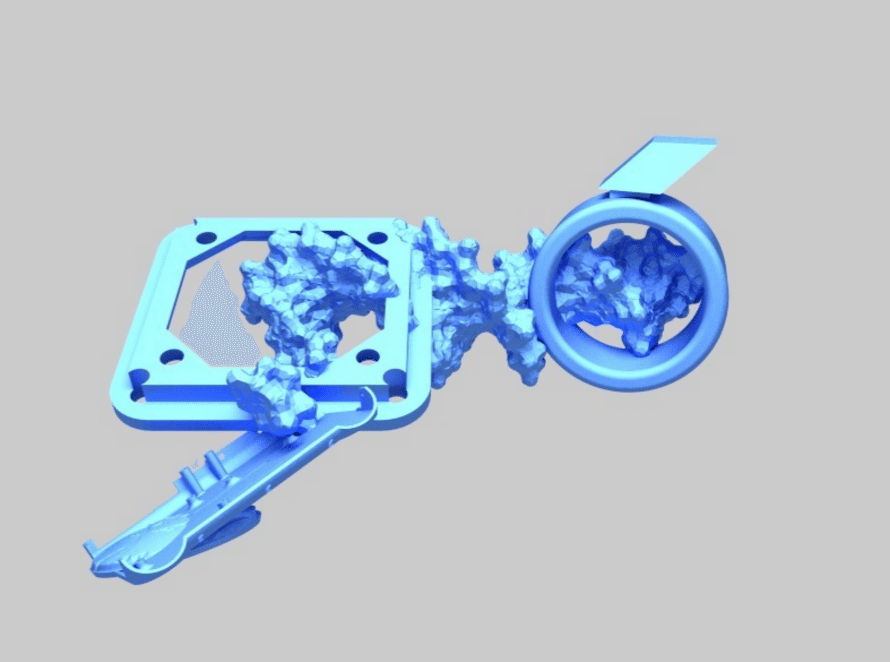In the past month, objects like the one above began popping up on Thingiverse published by user by the name Shiv Integer. What would only become clear to the community through a bit of sleuthing was who truly created the work and why. Remaining to be fully understood is what to make of it.
Various sources on Tumblr and Twitter have made reference to these eclectic collages of randomly assorted objects, but the true story behind the work has not been explained in full. Images of Shiv Integer’s design were most often accompanied with the following description:
Datsun merged with signal signal, 2016
“Automated Art bot constructs new sculptural designs by collaging several free-use Creative Commons 3D models together into semi-abstract forms which can be downloaded and 3D printed as readymade sculptures,” punctuated with a cryptic quote that has no verifiable reference, “You are all even more beautiful together.”
While invoking textbook tropes of post-modern art like the readymade or found object, I find it more interesting to not just consider how these objects were meant to understood by those in the know about art, but how these objects were deciphered by the very platform that inspired their creation. The response by Thingiverse community exemplifies the divide of mind between technology and the arts, perhaps not the creator’s original intent, but an interesting result none the less.
Found in the comments section of just one of Shiv Integer’s many remixed objects was a discussion lamenting the false alerts the bot was generating for certain users. Despite their research and even reading Shiv Integer’s about page, these years were hard-pressed to support the work as art when it served no discernible function beyond taking up space in their notification tray.
This user finds it more alarming than spam, suggesting it poses a threat to all users of the Thingiverse for revealing just how vulnerable the database is to attack. A clear example of how art and technology can be found directly opposed, especially when forced into conversation.
While Thingiverse users were eager to agree it was spam or perhaps something more sinister, offline in London, an art show was exhibiting these object abominations as sculpture, not crediting Shiv Integer, rather the artists responsible for the project, Matthew Plummer-Fernandez and Julien Deswaef. Co-curated by Plummer-Fernandez (well-known for previous 3D printing artwork), the show was part of an event called Art of the Bots presented by Abandon Normal Devices, a new media and fine arts organization based in London.
Evidently these objects can exist offline as art objects, but found online they are marked for spam. Where does that leave them, stuck between art and technology?
As an avid user of Thingiverse I look at this series of objects as an elaborate data visualization, illustrating what a catalog of physical objects can look like viewed free from the rules of organization, rendered like the odds and ends of a tinkerer’s junk drawer. Looking at what are mostly utilitarian things in the context of an art exhibition allows them to be seen as worthy in their own right apart from function. When removed from intended use, mashed together nonsensically, these parts are totally useless apart from their visual interest, so why not enjoy it?






